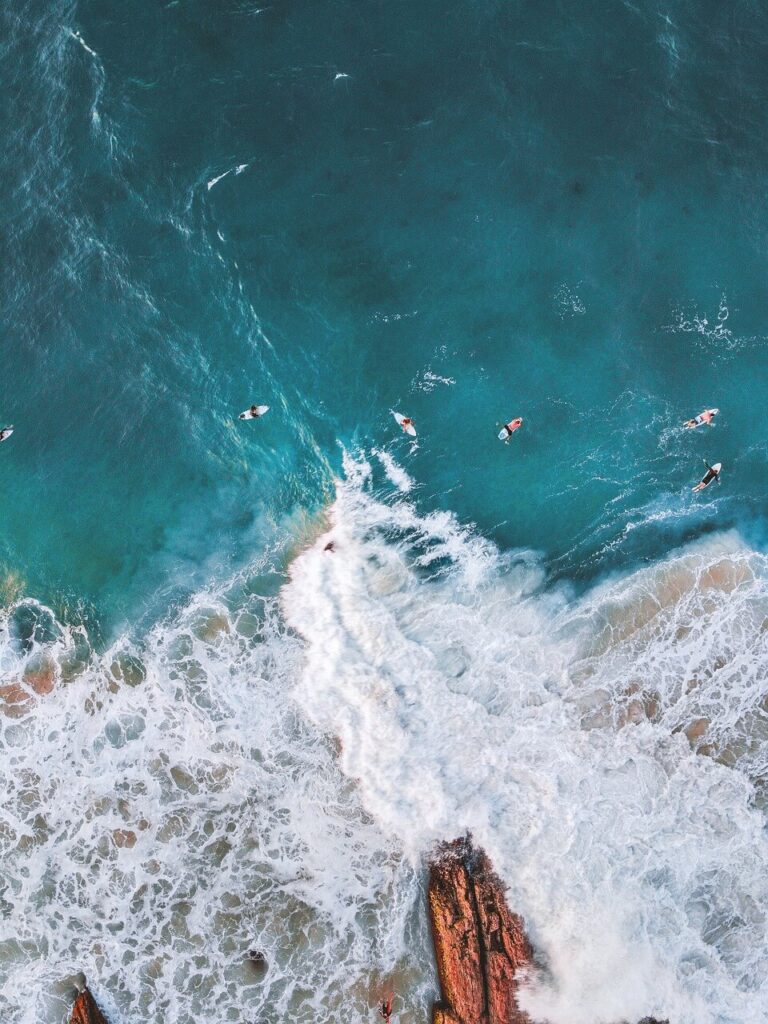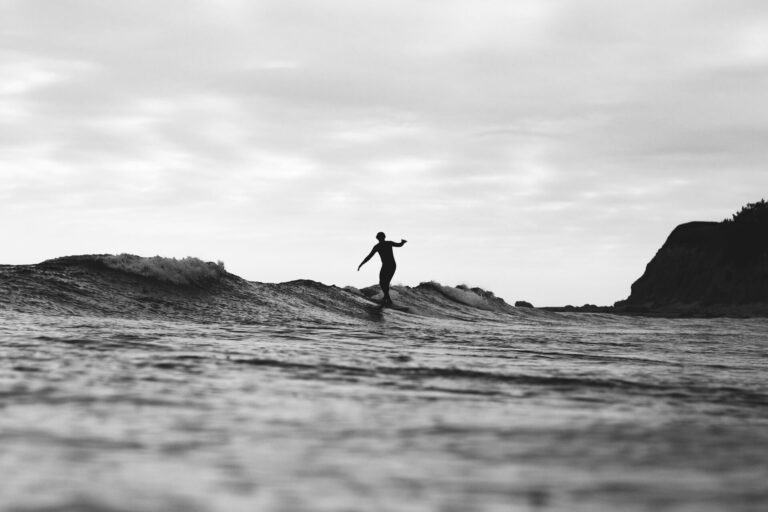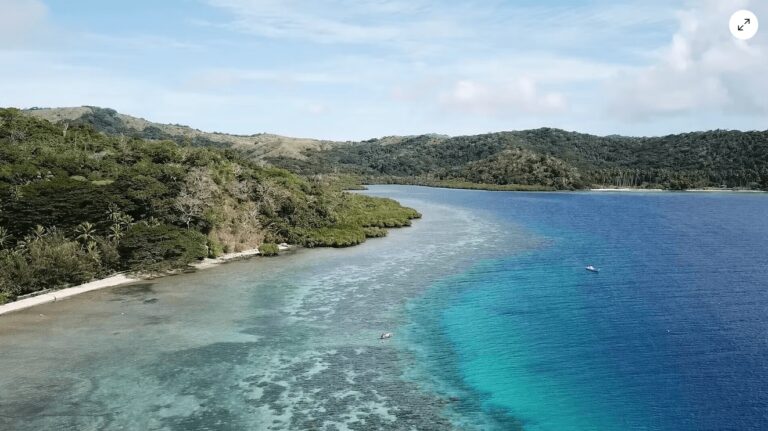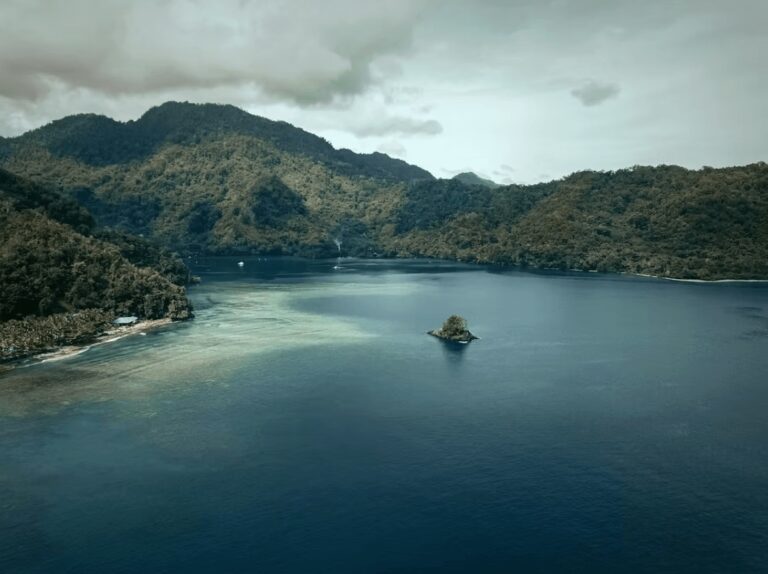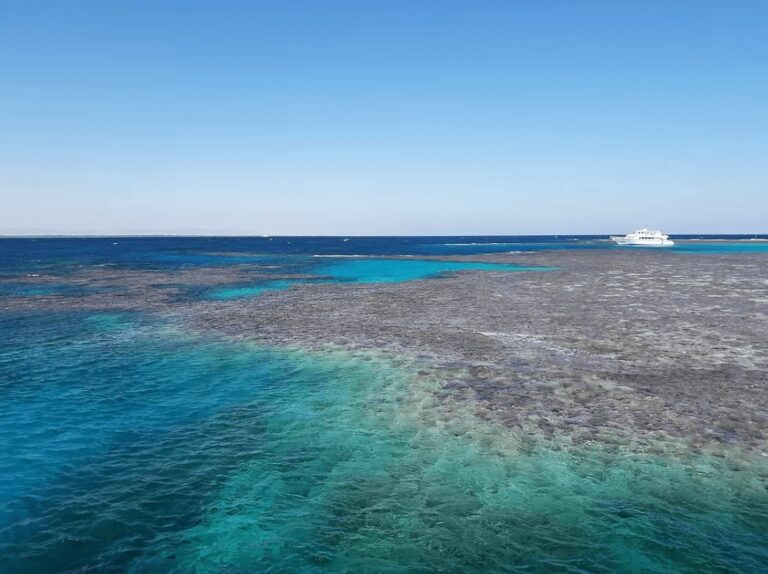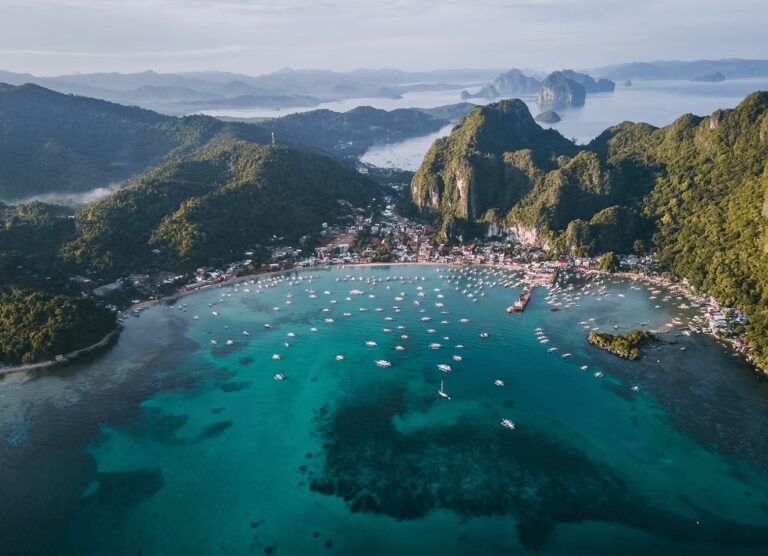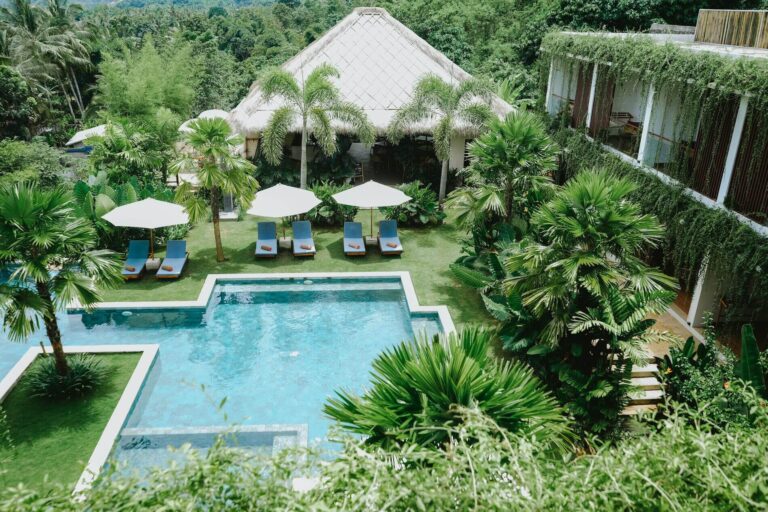Scuba diving in Timor Leste: Best dive sites + eco-friendly resorts
Looking for an uncrowded dive destination in Southeast Asia? Scuba diving in Timor-Leste offers everything from incredible muck dives to dramatic walls and unforgettable encounters with migratory whales.
While the dive infrastructure in this relatively new nation is still limited, there are highly experienced dive operators and eco-friendly dive resorts in Timor-Leste making it more accessible every year.
Scuba diving in Timor-Leste offers some extraordinary experiences. Honestly, we think it should be on every scuba enthusiast’s bucket list.
This small island nation (also known as “East Timor”) is in the heart of the Coral Triangle, sharing its border with the Indonesian province of West Timor. It is blessed with an incredible array of underwater environments, from dramatic walls to towering pinnacles and fascinating muck diving sites.
Timor Leste’s coral reefs and nutrient-rich waters support a huge diversity of marine life, from large schools of tuna and barracuda to well-camouflaged scorpionfish and dazzling sweetlips.
Not only do tiny treasures abound – pygmy seahorses, cleaner shrimps and inquisitive crabs – but East Timor coral reefs and waters are a playground for migratory whales, resident dugongs and several shark species.
Despite this, most of best dive sites in Timor-Leste remain blissfully uncrowded. The country’s tumultuous political history means it has only recently opened up to tourism, resulting in less competition for underwater space.
Divers who venture here are rewarded with some of the best diving in the Coral Triangle, without the crowds that can impact the underwater experiences (and health of the reefs) in other Southeast Asian destinations.
In this article, discover everything you need to know about scuba diving in Timor-Leste, from the most spectacular sites to recommended dive operators. We’ll also highlight several eco-friendly dive resorts in Timor Leste to help you plan a sustainable scuba vacation.
Planning a dive trip to Southeast Asia? Check out our scuba guides to Indonesia, Thailand, Myanmar, Malaysia and the Philippines.
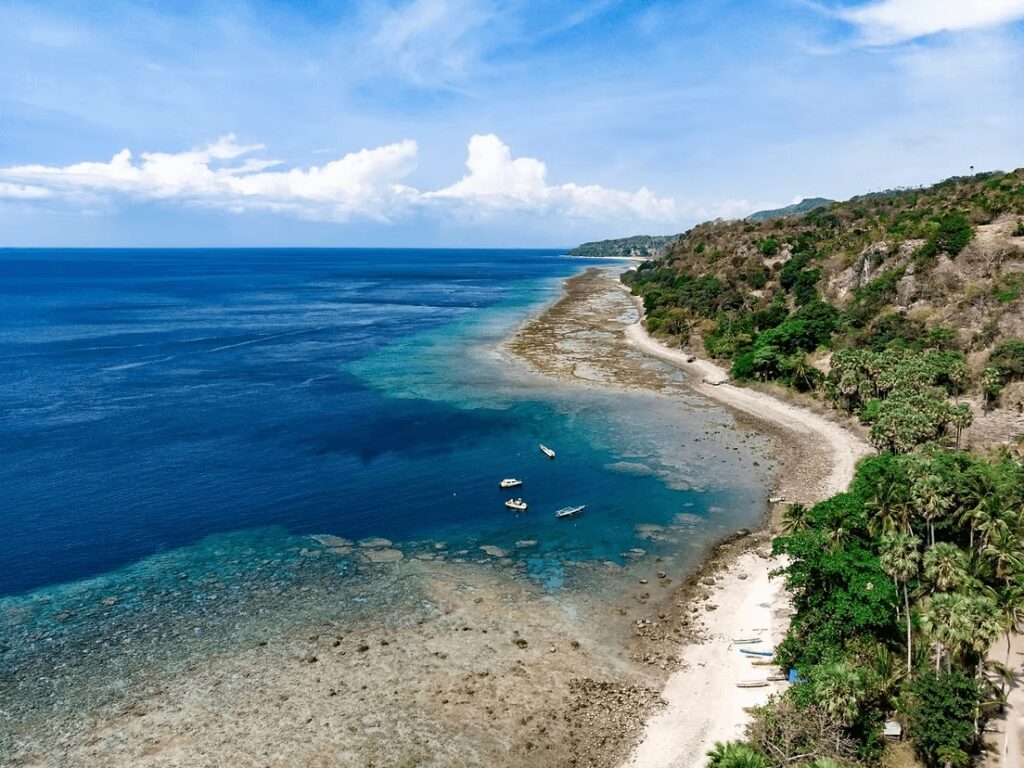
This article contains affiliate links, which means when you make a purchase through that link, we earn a small commission. Affiliate links come at no cost to you and ensure our content remains free!
What makes diving in Timor-Leste so special?
Timor-Leste encompasses not only the eastern portion of Timor but also the nearby islands of Atauro and Jaco. It also includes the tiny enclave of Oecussi on the north-western side of the island.
With tropical dry forests hugging the coast, coffee plantations blanketing the hills and dramatic mountain ranges thrusting towards the sky, it’s a paradise both on land and below the water’s surface.
The nutrient-rich waters flowing along the north coast of Timor-Leste are driven by the powerful “Indonesian Throughflow”. This complex system of ocean currents connect the Pacific and Indian Oceans.
As these strong currents surge through the deep basins of the Banda Sea and squeeze through the narrow Ombai Strait (between Alor, Wetar and Timor Leste), they churn up minerals and organic matter from the depths.
This bathes the coral reefs and seabed in a constant supply of phosphorus, nitrogen and other vital nutrients. In short, it provides the building blocks for a thriving ecosystem to support Timor-Leste’s marine life.
Hard and soft corals of all shapes and sizes carpet the seafloor and walls, while clouds of tropical fish dart amongst the crevices and crannies.
Pelagic species are abundant too around Timor-Leste coral reefs. Sharks, tuna, manta rays and even whales frequent the area (the best sightings are between September and November) to partake in the oceanic buffet.
The diving around Timor-Leste is also special because the waters are crystal clear, largely due to the arid climate and lack of river runoff. The results? Exceptional visibility!
All this conspires to make the scuba diving in Timor Leste some of the most spectacular and unspoiled in the world.
If you want to learn more about the incredible diving around Alor, check out our detailed article here.

Best places to dive in Timor-Leste
If you’re planning a dive vacation in Timor-Leste, there are three main areas to focus on. The best dive sites in Timor-Leste are around Dili and its surrounding coastlines, Atauro Island (located just north of Dili) and the island of Jaco at the far eastern tip of Timor-Leste.
Best diving in Dili, Timor-Leste
Dili itself has some excellent diving right off the shore, with colourful coral gardens and an abundance of tropical fish, turtles and reef sharks. There are several dive shops in Dili that can facilitate one or two-tank trips, including Dive Timor Lorosae, Aquatica Dive and Dreamers Dive Academy.
Among the best dive sites in Dili is Tasi Tolu – a must-visit for muck diving enthusiasts. Here, you can spot fascinating critters like spiny tiger shrimp, colourful nudibranchs and Rhinopias nestled among the sand and rubble.
For the ultimate macro photography experience, head to Pertamina Pier, considered the best critter dive site in Dili. Dili Rock is also of note, boasting a lively coral bommie aptly named “Piccadilly Circus” due to its bustling aquatic activity.
Lone Tree offers a contrasting underwater landscape, with a deep reef slope on one side and a dramatic wall plunging into the depths on the other. The coral reef here is home to swarms of reef fish and a mesmerising anemone garden filled with clownfish.
Heading east or west along the coast from Dili opens up even more scuba diving opportunities. Most sites are accessible from the shore.
The reefs here are healthy and largely untouched, featuring huge sea fans, sponges, and hard and soft corals in a dazzling array of colours.
Driving along Timor Leste’s scenic coastal roads is an experience in itself and makes the long-ish transfers to and from Dili’s best dive sites more than worth it. That being said, all of these coastal dive sites can easily be accessed on day trips with one of the Dili-based dive operators mentioned above.
To the east, a series of short paths branch off from the main road. These grant access to several sheltered dive sites near Dili.
Among these, a few stand out, including Marble Rock, One Tree and Secret Garden. The latter features an enchanting sponge garden with resident schools of purple anthias and shimmering silver glass fish darting amidst the colourful seascape.
Westward from Dili lies the town of Maubara, home to the Church dive site. It features a sandy slope peppered with bommies. Its deeper reaches surge with a profusion of marine life nourished by the robust currents that sweep the area.
Also of note is the Fort, named after the ruins of a Portuguese-built fortification. This East Timor dive site is also renowned for its marine life-rich bommies.

Best dive resorts in Dili, Timor Leste
Aquatica Dive Resort
Proudly Australian-owned and operated since its establishment in 2013, Aquatica is a PADI 5-Star dive resort near Dili.
From the moment you arrive, the friendly team at this Dili dive resort goes above and beyond. They’ll ensure your stay is unforgettable, whether you’re a seasoned diver or here to do an introductory course.
In addition to their affordable cabins, complete with en-suites and air-conditioning, there are deluxe rooms with spacious lounges and balconies.
“Best dive shop in Timor – fins down!” – Grace (read more reviews here)
Dive Timor Lorosae
Dive Timor Lorasae was established in 2000 and is one of the longest-running dive shops in Timor-Leste. It’s also the only PADI 5-Star Eco Centre in the country. It offers everything from muck dives around Dili to shore dives along the coast and day trips to Atauro Island.
When it comes to accommodation at this Timor-Leste dive resort, there are well-equipped guest rooms with shared facilities and deluxe studio apartments. The latter come complete with self-catering facilities. Lazing beside the swimming pool is the perfect way to relax in between dives.
“The dive team at Dive Timor Lorosae are highly professional…Couldn’t recommend diving with them more highly.” – Libby (read more reviews here)
How to get to Dilif or diving in Timor-Leste
Dili’s Presidente Nicolau Lobato International Airport is well connected to both Indonesian and international destinations. There are direct flights from Denpasar (Bali), Darwin (Australia) Singapore and Kuala Lumpur (Malaysia). The airlines operating these routes include Airnorth, QantasLink, Air Timor, Citilink and Batik Air.
Additionally, you can travel by bus from West Timor – services are available from Kupang.
Want to combine your Timor-Leste adventure with a dive vacation in Indonesia? Discover some of the most amazing places to dive in Indonesia here.
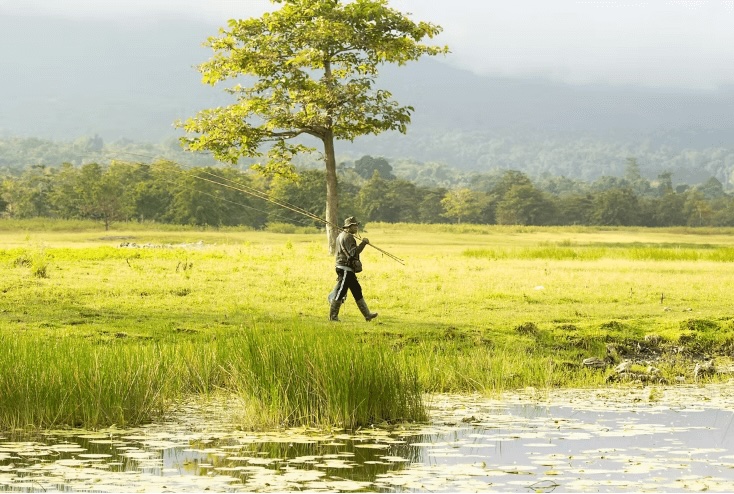
Diving Atauro Island, Timor-Leste
Located just offshore from Dili in the Ombai Wetar Strait, Atauro Island offers some of the best diving in Timor-Leste. Its remote location and lack of runoff from rivers or streams result in exceptionally clear, turquoise waters. The visibility here often exceeds 40 metres (130 feet)!
Diving Atauro Island’s West Coast
On the island’s west coast, dramatic walls plunge into the depths. Many are adorned with huge Gorgonian fan corals, barrel sponges and a kaleidoscopic array of both hard and soft corals.
Sheltered bays and scenic reefs on Atauro’s east coast play host to clouds of colourful reef fish, along with countless unique macro critters.
Encounters with larger pelagic species are common – tuna, mackerel and reef sharks all frequent the area. Sea turtles are a regular sight and lucky divers may even spot a rare dugong shyly grazing on seagrass in the shallows.
Large marine mammals pass through the Ombai Wetar Strait on their seasonal migrations. As such Atauro Island is one of the best places for
whale watching in Timor-Leste.
Among the best dive sites on Atauro Island’s west coast, Adara offers the greatest variety. This picturesque bay features a gently sloping sandy bottom. It’s dotted with colourful sponge gardens and flanked by dramatic walls adorned with soft and hard corals.
When diving here, be sure to keep an eye out on the deep blue as large pelagic creatures often cruise by.
Also nearby is Kitali Bay, home to some spectacular bommies, and Vatuo, at the island’s northern tip. This is one of the best places around Atauro Island to witness migratory marine mammals such as whales.
Diving Atauro Island’s East Coast
The east coast of Atauro Island boasts two well-known dive sites near the villages of Beloi and Vila.
Beloi, situated roughly halfway down the east coast, features a large sheltered bay with shallow fringing reefs, as well as a small barrier reef leading to a deep drop-off. This diversity of underwater terrain provides countless cracks, crevices and hiding spots to explore.
Further south, the small village of Vila presents a similar underwater landscape with its fringing reef system, slope and drop-off. Its most notable feature is a remarkably large and stunning giant clam.
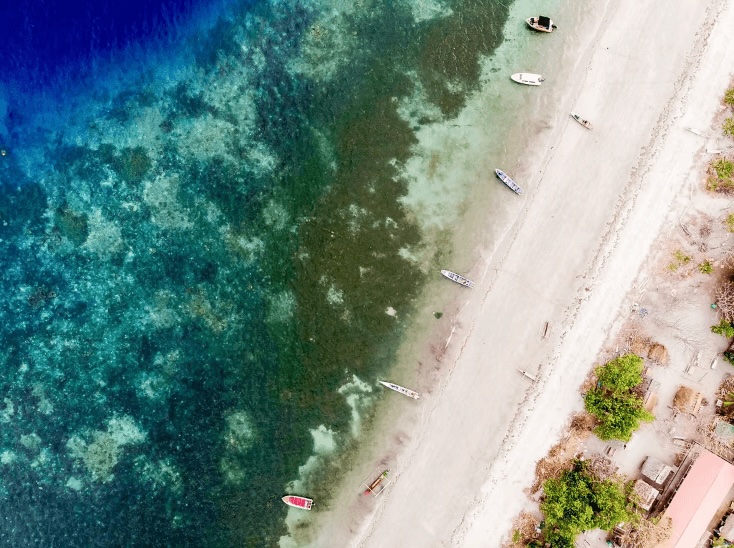
Best dive resorts on Atauro Island
Atauro Dive Resort
Boasting a spectacular setting on the island’s east coast, Atauro Dive Resort is a paradise disconnected from the outside world. The resort’s knowledgeable and friendly dive staff are dedicated to ensuring an unforgettable experience, whether you’re an experienced scuba enthusiast or just starting out.
The charming beachfront bungalows provide a front-row seat to breathtaking sunrises. Meanwhile, the garden rooms offer a serene retreat amidst the forested surroundings. This is definitely one of the best dive resorts in Timor-Leste!
“Bliss!!! Location and accessibility for magical snorkelling and diving.” – Nicole (read more reviews here)
Compass Diving Eco Resort
Compass Diving is a PADI 5-Star Dive Resort (and Green Fins Member) near Beloi on Atauro Island’s east coast. It offers a comprehensive selection of PADI courses catering to divers of all skill levels, as well as daily dive trips to discover Atauro’s underwater wonders.
When it comes to accommodation at this East Timor dive resort, you can opt for one of their air-conditioned villas or a budget-friendly tent, nestled just behind the resort’s sandy beach. The resort’s commitment to sustainability sets it apart as an eco-conscious choice for divers visiting Atauro.
“Once-in-a-lifetime experience!” – Emily (read more reviews here)
How to get to Atauro Island for diving in Timor Leste
Situated just across the Ombai Wetar Strait from Dili, Atauro can be easily reached by plane, ferry or speedboat. All services are heavily dependent on the weather and can change based on the season and year.
MAF (Mission Aviation Fellowship Timor-Leste) operates 15-minute flights from Dili to Atauro three days a week. You can find the current flight schedule here.
Government-run ferries operate several days of the week, usually travelling from Dili to Atauro in the morning and back in the afternoon. As the schedules change frequently, it is best to check with your dive resort at the time of booking. Tickets can be purchased at the wharf a day in advance.
The most convenient way of getting from Dili to Atauro is by speedboat transfer, with departures every day. These can be booked directly with your Atauro dive resort.

Diving Jaco Island, Timor Leste
Nestled at the easternmost tip of Timor-Leste, Jaco Island lures adventurous divers with its unspoiled beauty and incredible underwater world. This remote paradise lies within the protective bounds of Nino Konis Santana National Park, the first and only national park in the country.
Jaco Island’s reefs are among the healthiest in Timor-Leste, largely due to the lack of modern development and commercial fishing in the region. The coral reefs are absolutely teeming with marine life!
As such, Jaco Island has become a legendary dive destination for scuba junkies in the know, but getting here isn’t easy.
How to get to Jaco Island for diving in Timor Leste
The journey to reach Jaco Island is an adventure in itself. The only options are a liveaboard trip or joining one of the occasional expeditions run by Dili dive operators.
If you want to dive around Jaco Island in East Timor, it’s a case of keeping your ear to the ground about upcoming liveaboard trips. Alternatively, you can connect with a Timor Leste scuba operation such as Dive Timor Lorasae, Compass Diving or Aquatica Dive.
Best time to dive in Timor Leste
Timor-Leste experiences two distinct seasons: the dry season lasts from May to November while the wet season extends from December to April. Along the coastline, temperatures sit at a pleasant 25 to 35ºC (77 to 95ºF) throughout the year.
The best time to dive in Timor Leste is generally considered to be between May and November. If you want to see whales and dolphins during your dive vacation in Timor Leste, the ideal months to see these magnificent creatures are from October to December.
FAQs about diving in East Timor
What can you see diving in Timor-Leste?
Rich in nutrients, East Timor’s waters foster an astonishing variety of marine life, ranging from large schools of tuna and barracuda to well-camouflaged scorpionfish and endearing sweetlips.
Additionally, divers can encounter tiny wonders like pygmy seahorses, cleaner shrimps and curious crabs, as well as migratory whales and resident dugongs. When diving in Timor-Leste, there’s also the possibility to witness several species of sharks, including whitetips, threshers and scalloped hammerheads.
When to dive Timor-Leste?
Timor-Leste has two distinct seasons – the dry season (May to November) and the wet season (December to April). Along the coast, temperatures remain between 25 to 35ºC (77 to 95ºF) all year round.
The dive season in Timor-Leste is from May to November. If you’re hoping to spot whales and dolphins during your dive trip to Timor-Leste, the best months for encountering these marine mammals are from October to December.
Is it safe to travel to Timor-Leste?
While East Timor has experienced periods of instability and violence in the past, the security situation has greatly improved and stabilised since the country gained independence in 2002. Today, Timor-Leste is generally considered a safe place to visit for tourists. It has a low crime rate and friendly, welcoming locals.
However, as with travel to any developing nation, visitors should exercise normal precautions. This includes being aware of your surroundings, keeping valuables secure and avoiding walking alone at night in unfamiliar areas.
The country’s infrastructure is still developing. So travellers should be prepared for occasional power outages, limited public transportation and basic accommodations in some areas.
Health risks in Timor-Leste include malaria, dengue fever and other tropical diseases. Getting proper vaccinations and taking preventative measures is advised.
Are there crocodiles in Timor-Leste?
Estuarine crocodile can be found in the coastal waters and estuaries around much of Timor-Leste. The notable exception is Atauro Island. Although attacks on humans are relatively rare, they can be deadly when they do occur due to the size and power of these predators.
For this reason, it is crucial for tourists to exercise caution when in and around the water in Timor-Leste. You should only do so under the guidance of local tour operators. They are equipped with insider knowledge about the safety of specific areas and whether estuarine crocodiles are present.
How do you get to East Timor?
The easiest way to get to Timor-Leste is by flight to Dili, which is served by Presidente Nicolau Lobato International Airport. It offers good international connections, with regular flights to Dili from Denpasar (Bali), Darwin (Australia), Singapore, and Kuala Lumpur (Malaysia). The airlines that operate these routes are Airnorth, QantasLink, Air Timor, Citilink and Batik Air.
It’s also possible to reach East Timor overland by bus from Kupang in the Indonesian province of West Timor.

PLAN YOUR TRIP WITH OUR FAVOURITE RESOURCES:
Find hotels and resorts via Booking or Agoda
Book tours and experiences via Viator or GetYourGuide
Find a rental car via Discover Cars
Book flights via Kiwi or Booking
Search for buses and trains via 12Go or Omio
Get travel insurance via SafetyWing
Buy a digital eSIM with Airalo
By purchasing through our links, you’ll be supporting our website at no additional cost to you
About the authors
We are a team of passionate divers and surfers with decades of combined experience in the water and travelling to all corners of the globe. After years of chasing waves and descending into the deep blue, we’ve created this resource to highlight sustainably run surf camps, eco-friendly dive resorts and conservation-focused ocean trips to help inspire your next adventure.
Eco Ocean Escapes was born out of a love of the ocean, an obsession with travel and a concern about the impacts of our adventures on the environments we explore. Despite the benefits that surf and dive tourism can bring to local communities, we recognised that ocean-based adventures are not always managed in a sustainable manner.
Through our articles, we hope to inspire those seeking a responsible surf or dive trip that is all about supporting local communities, preserving our coastal environments and the incredible marine species that inhabit our oceans.
-
Sustainable Surf Tourism and Respecting Local Communities
Surf tourism has exploded over the last two decades. With travel becoming more accessible and social media exposing hidden spots, once-remote breaks in Indonesia, Central America, Morocco and the Pacific Islands are now iconic stops on global surf circuits. While surf travel brings income, jobs and global attention to coastal towns, it can also disrupt…
-
Inspiring Citizen Science Projects for Surfers + How to Get Involved
As surfers, we are intimately connected to the ocean – its rhythms, its wildlife and its health. Because of this relationship, many of us are looking for meaningful ways to protect the marine environments we love. One of the simplest and most impactful ways we can do this is by joining citizen science projects. These…
-
Understanding Marine Protected Areas (MPAs): Why divers should care
If you’ve spent time underwater (as a diver or snorkeller), you’ve probably noticed something: not all sites are beacons of health. Some reefs appear vibrant and full of life, while others show signs of stress – broken coral, few fish or algae-covered rocks. One of the biggest factors shaping the health of our oceans is…
-
Costa Rica: Best Marine Parks for Scuba Divers + Eco Dive Resorts
Costa Rica is a paradise for eco-conscious travellers and underwater explorers are no exception. With its healthy coral reefs, pelagic-rich waters and some of the most progressive environmental policies in the world, the country is a dream destination for those who want to dive responsibly. We’ve been lucky enough to visit Costa Rica several times…
-
Eco-Diving: Best Destinations for Sustainable Scuba Travel
As humans inspired by the underwater world, there is plenty of incentive to protect our coral reefs. Here at EcoOceanEscapes, we want to do our bit to save endangered marine species and keep our oceans free of trash. One impactful action we can all take is to choose sustainable diving destinations. These are nations (or…
-
Eco-Friendly Diving: How to Be a Sustainable Scuba Advocate
Understand the environmental impacts of diving and sustainable scuba practices in this comprehensive guide to eco-friendly diving. Any diver will tell you that being underwater is an incredible experience. It’s a world that not everyone has the opportunity to explore and the encounters we have with marine creatures can be life-changing. Watching manta rays soar…

We are a team of passionate divers and surfers with decades of combined experience in the water and travelling to all corners of the globe.
After years of chasing waves and descending into the deep blue, we’ve created this resource to highlight sustainable surf camps, eco-dive resorts and conservation-focused ocean trips to help inspire your next adventure.
Eco Ocean Escapes was born out of a love of the ocean, an obsession with travel and a concern about the impacts of our adventures on the environments we explore.

